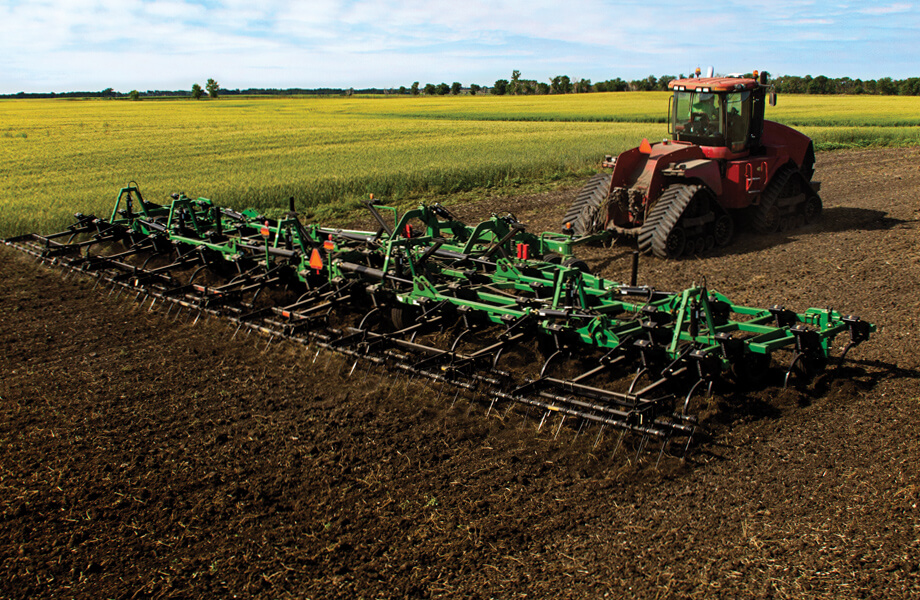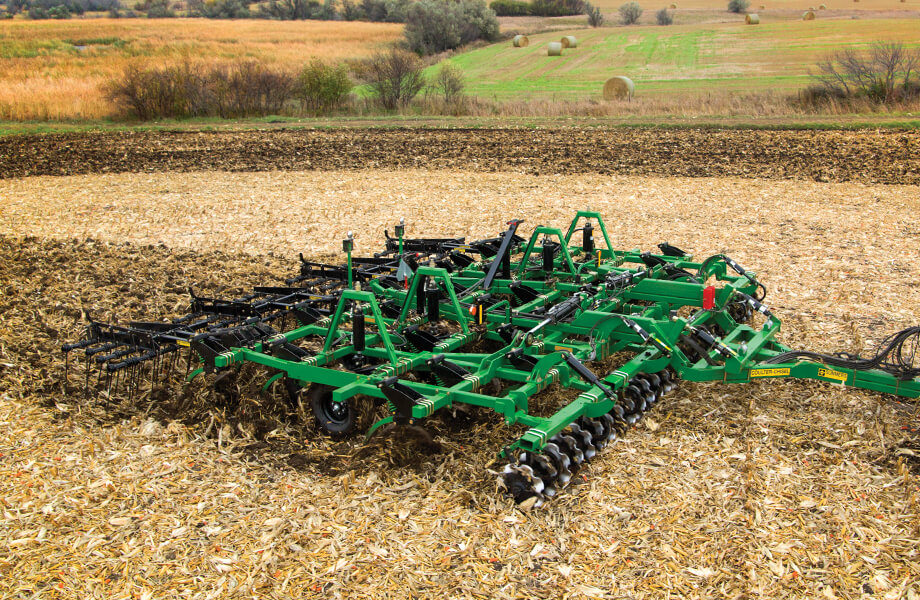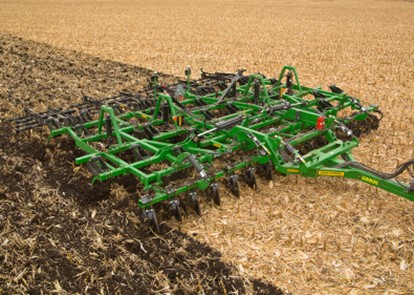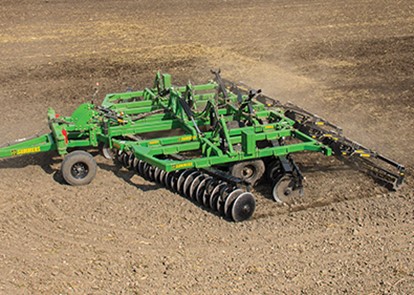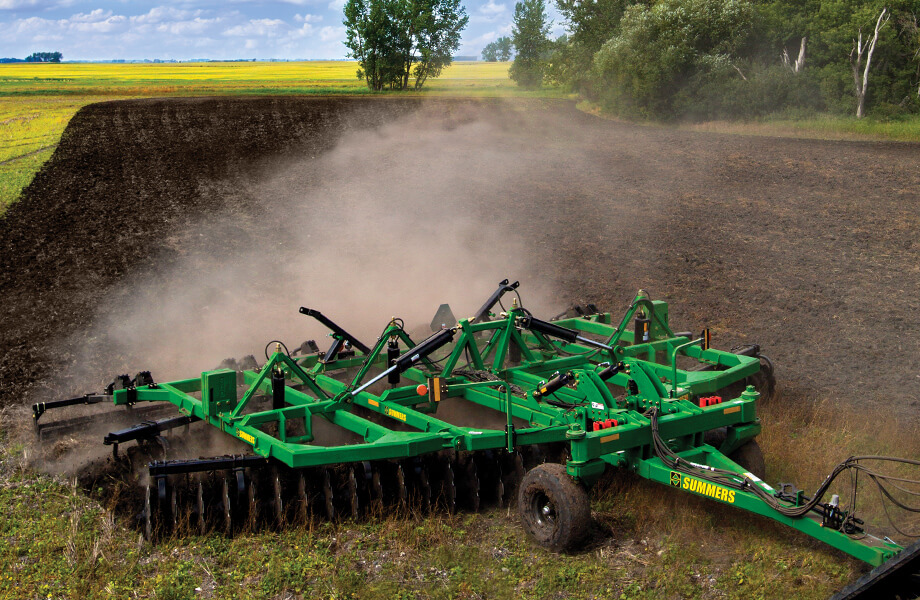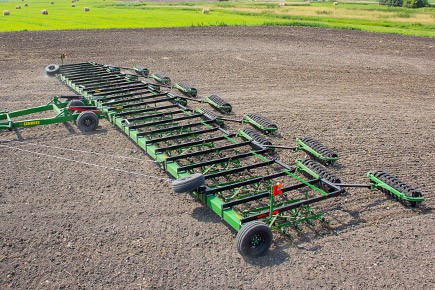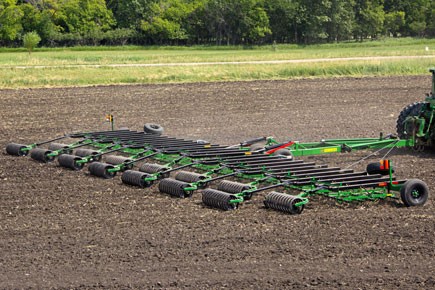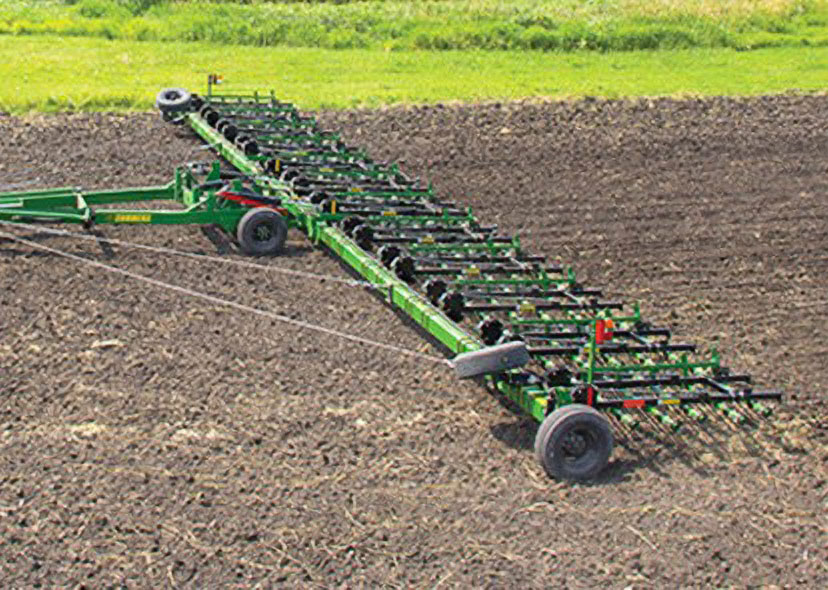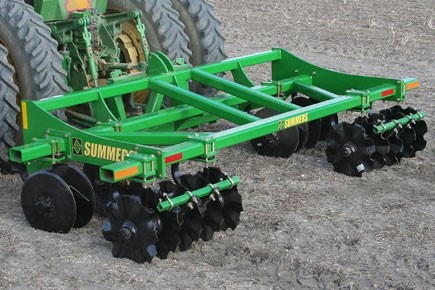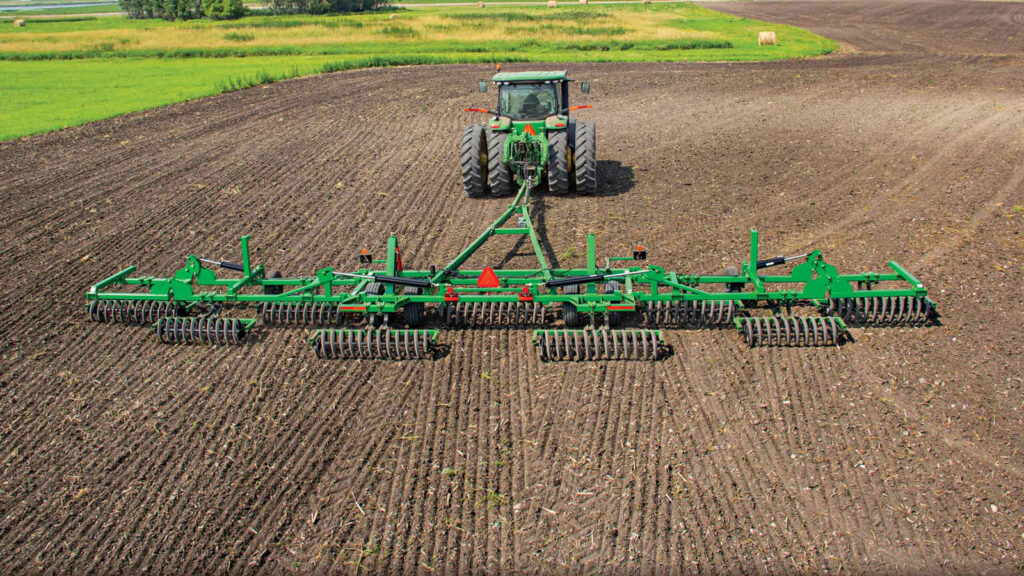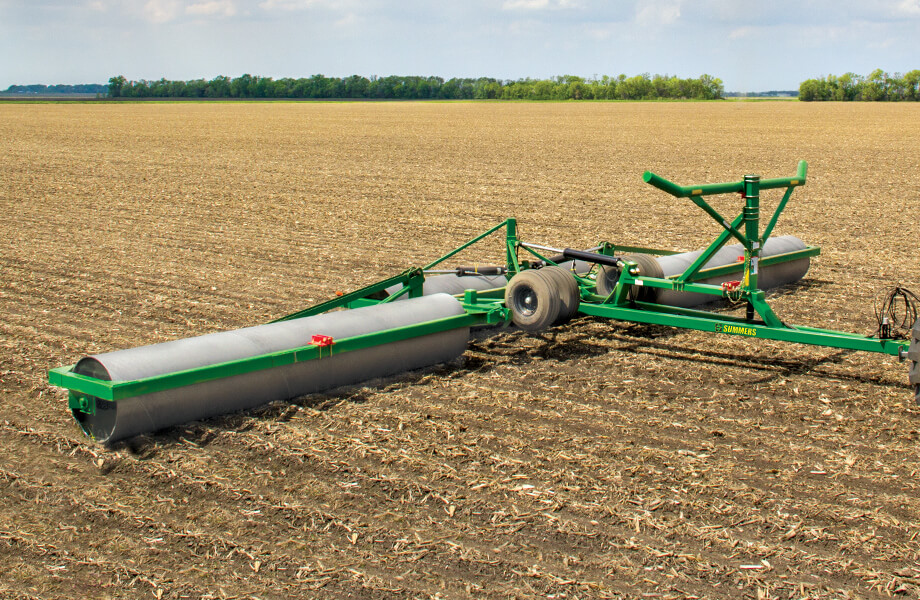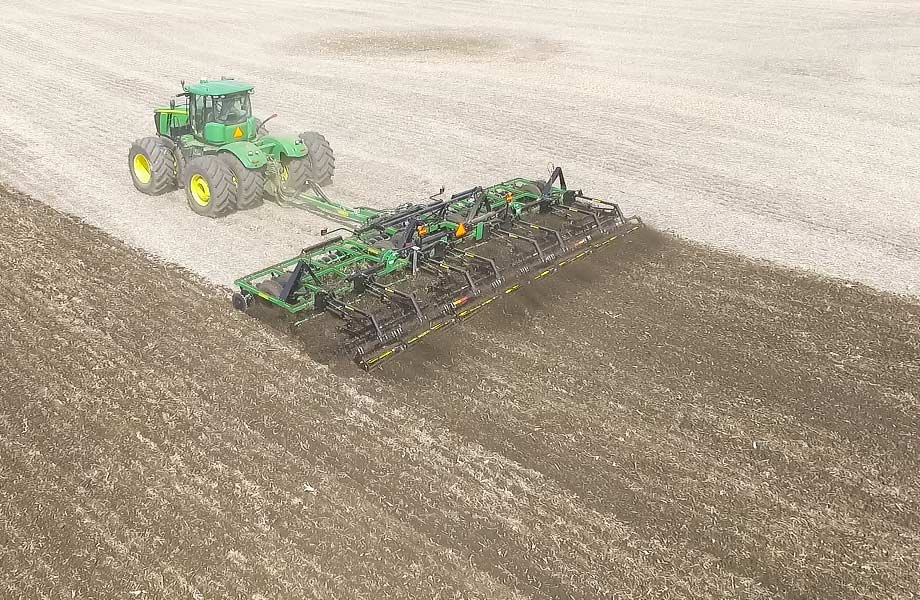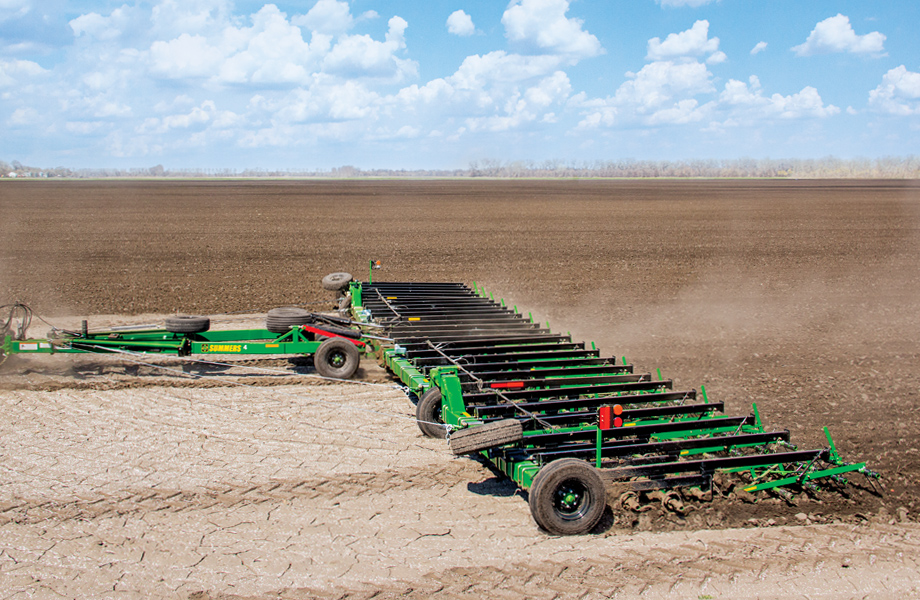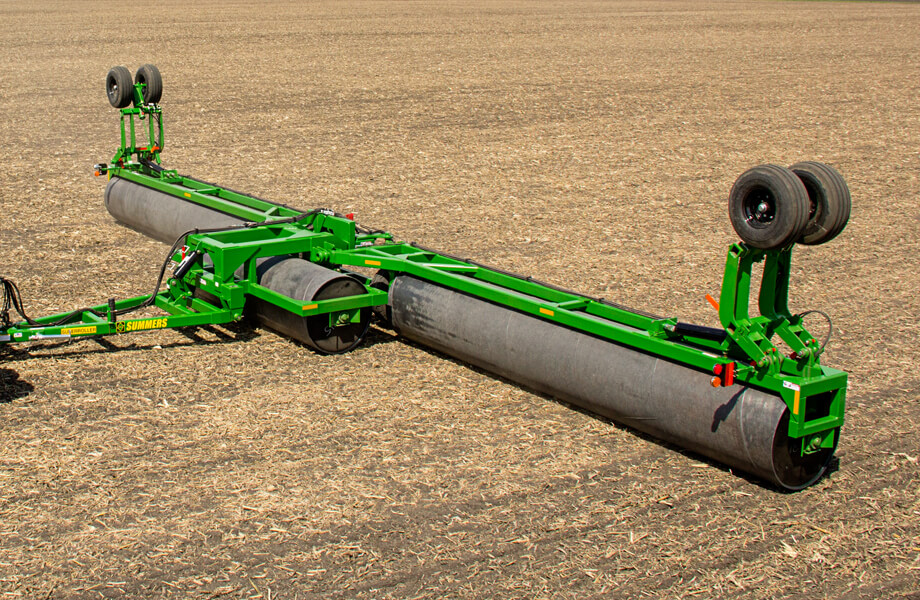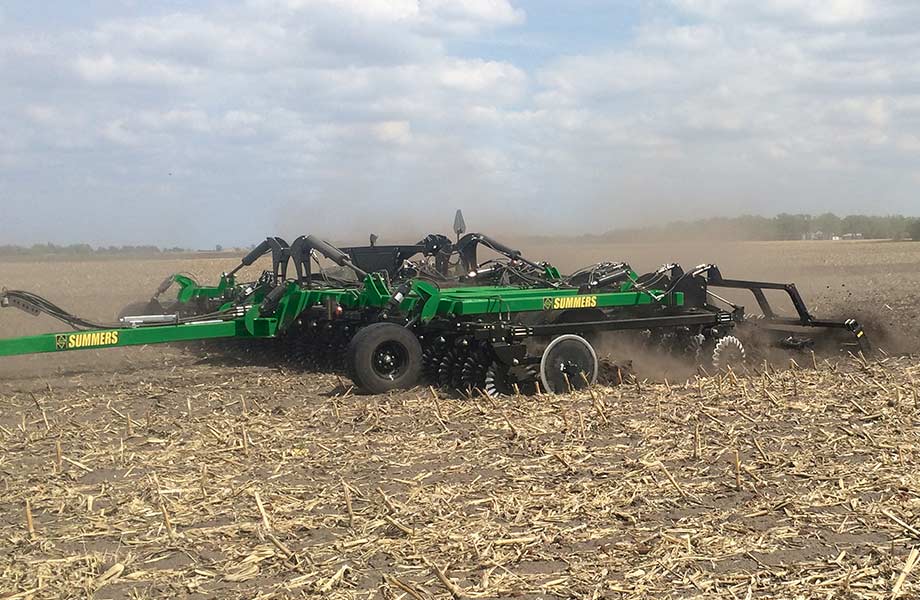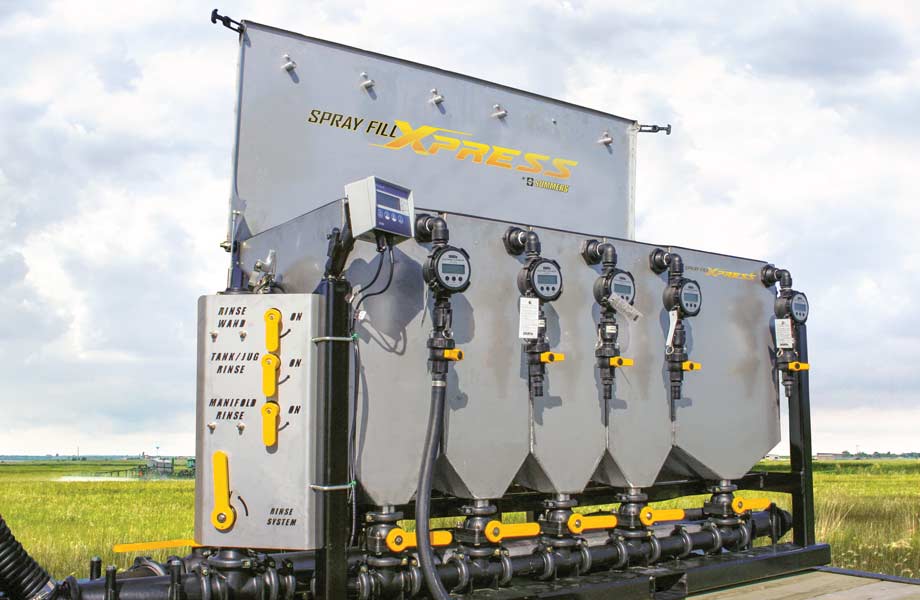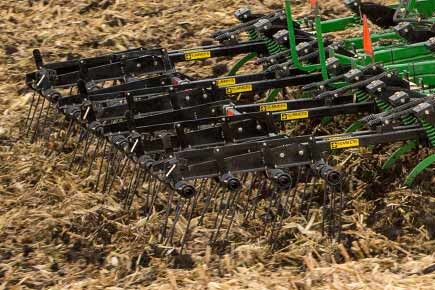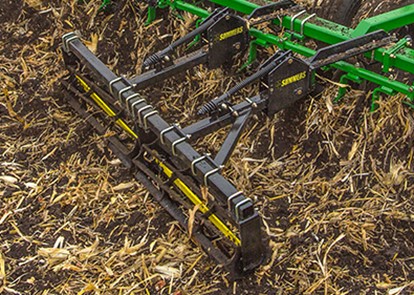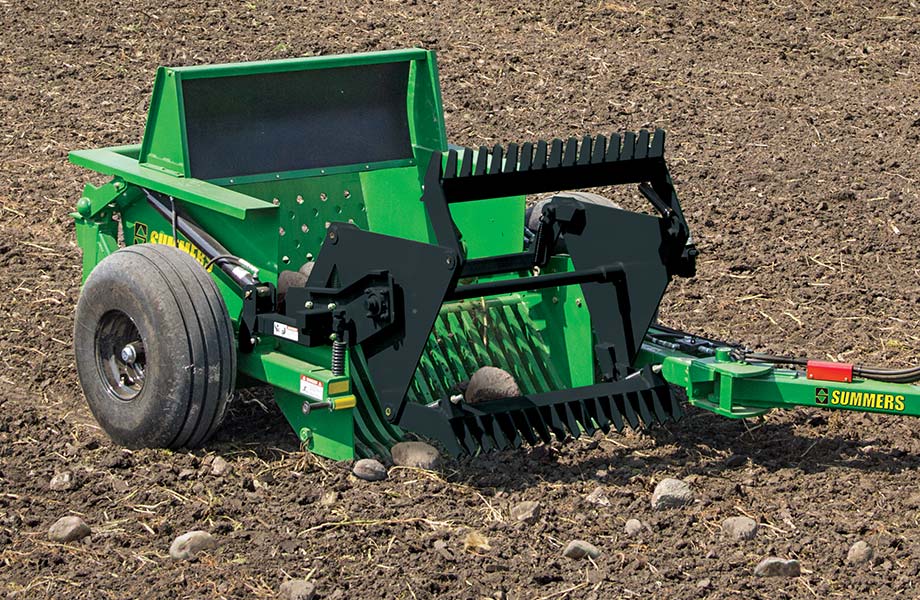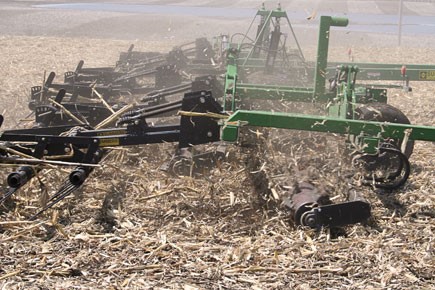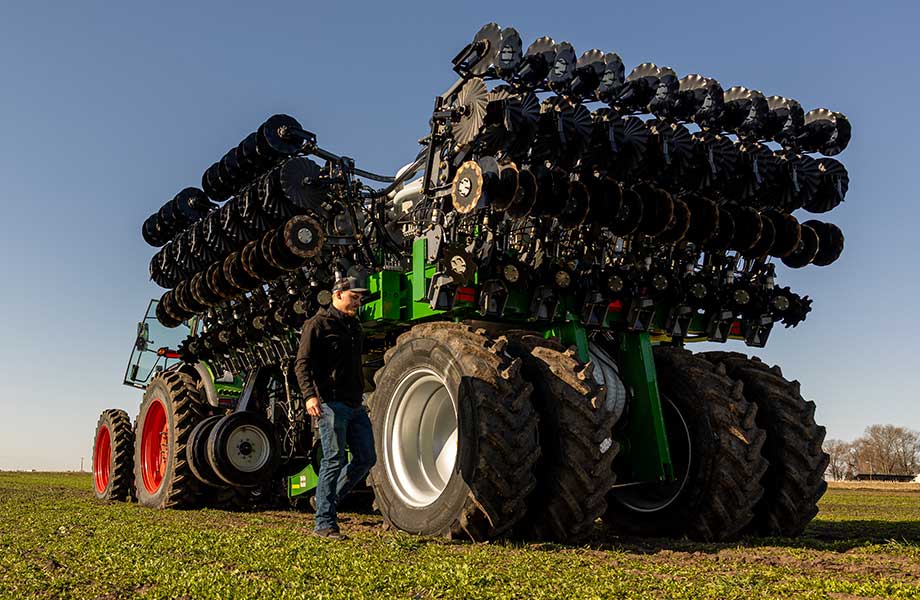Summers Chisel plows offer the durability and options you need. 12’’ and 15’’ spacing, Heavy trips and unsurpassed array of mounted attachments. Give you full control while offering peace of mind. What’s mother nature going to throw at you? No needy to worry you’ve got Summers.
Search by Product Type
Sort by Solution
- Chisels
- Disks
- Harrows
- Soil Conditioning
- Field Cultivators
- Vertical / Variable Rate Tillage
- 3 Point Tools
- Land Rollers
- Fertilizer / Application Products
- Rock Picker
Dig Deeper with Summers Chisels
Maximize your residue
Big yields can lead to big residue management issues. Start sizing and mixing the residue in the fall to help it break down by spring. This can also help incorporate important nutrients back into the soil.
Straw management and seed bed prep
For most people, fall tillage involves more conventional tillage tools, such as disks and chisel plows, that offer deeper tillage depths for mixing a lot of soil.
Make your best season even better
Getting ready for spring planting? A light tillage tool can help get your soil in top condition.
Best seed bed you’ve ever had
Whether it’s dry, liquid or NH3, adding fertilizers and other nutrients to your soil is the best way to give crops a head start on reaching their full potential. With varying commodity prices and increased input costs, doing so with great precision is key to sound returns, regardless of a farming operation’s size.
Perfect your Soil Health
Control your season. Spring? Wet, cold fields? Summers will get you in to open up your fields so you control your destiny. Fall? Heavy residue don’t want to much tillage? Summers offers the perfect solution to mix exactly what you want. No more no less.
Fast, Simple, Convenient
Looking for a greaseless tool that is as simple as hook up and go? Whether you are filling tracks, hitting bad spots or need a simple VT tool to cover big acres. The 3RT is your safe place.
The Logic Behind Land Rolling
Rocks, root balls and other solid objects can cause expensive damage and wear to combines when harvesting low-to-the-ground crops. That’s why we recommend using a land roller soon after planting. It pushes those objects into the ground, so they aren’t picked up later by the combine header.
Land rollers also firm the soil (without compacting it) to maximize seed-to-soil contact. In our side-by-side field tests, we’ve found that land rolling results in quicker emergence and increased yields of one to two bushels per acre in soybeans. Additionally, land rollers can be used in the fall after harvest to fracture tough residue.
Coil packers are similar to land rollers, but they deliver less pressure to the ground, and the coils also provide light tillage action by sizing dirt clods. These products leave a herringbone pattern in the soil, compared with the smooth finish produced by standard land rollers.
Get back to doing what you do best
Chemical batching and fertilizer application is the back bone to higher yields and more dollars in your pocket. Want to cover 82% more acres in a day? Want to place fertilizer EXACTLY where your plant can utilize it? Farming is a factory and every plant matters.
More Than One Way to Manage Rocks
Remove rocks completely with a continuous rock picker. Or, you can use land rollers and coil packers to push rocks into the soil after planting, which can help avoid costly combine damage at harvest time.
- Conventional Tillage
- Fall Residue Management
- Fall Tillage
- Fertilizers/Nutrient Application
- Field Spraying
- Land Rolling
- Minimum Tillage
- Mounted Attachments
- No Till
- Rock Removal
- Seedbed Preparation
- Soil Conditioning
- Spring Residue Management
- Spring Tillage
- Vertical Tillage
- Variable Rate Tillage
Dig Deeper With Conventional Tillage
Conventional tillage is often characterized by deeper tillage tools, such as disks and chisel plows, that can mix large amounts of soil, bury heavy residue or break compacted layers.
Get Rid of Your Residue
Big yields can lead to big residue management issues. Start sizing and mixing the residue in the fall to help it break down by spring. This can also help incorporate important nutrients back into the soil.
Get Ready for Fall Tillage
For most people, fall tillage involves more conventional tillage tools, such as disks and chisel plows, that offer deeper tillage depths for mixing a lot of soil.
Fertilizer/Nutrient Application
Whether it’s dry, liquid or NH3, adding fertilizers and other nutrients to your soil is the best way to give crops a head start on reaching their full potential. With varying commodity prices and increased input costs, doing so with great precision is key to sound returns, regardless of a farming operation’s size.
Achieve Accurate Applications
No matter what types of chemicals you plan to apply, pull-type field sprayers are an efficient way to get the job done. They can be an effective solution for both large and small acre operations.
The Logic Behind Land Rolling
Rocks, root balls and other solid objects can cause expensive damage and wear to combines when harvesting low-to-the-ground crops. That’s why we recommend using a land roller soon after planting. It pushes those objects into the ground, so they aren’t picked up later by the combine header.
Land rollers also firm the soil (without compacting it) to maximize seed-to-soil contact. In our side-by-side field tests, we’ve found that land rolling results in quicker emergence and increased yields of one to two bushels per acre in soybeans. Additionally, land rollers can be used in the fall after harvest to fracture tough residue.
Coil packers are similar to land rollers, but they deliver less pressure to the ground, and the coils also provide light tillage action by sizing dirt clods. These products leave a herringbone pattern in the soil, compared with the smooth finish produced by standard land rollers.
Minimize Soil Disturbance
For operations that are somewhere in-between no till and conventional tillage, there are a variety of tools available to manage residue and condition the soil, while keeping soil disturbance to a minimum.
Finish Strong
Create the ideal field finish with a mounted attachment on your tillage equipment. You can use harrows, rolling baskets or rolling choppers to achieve the desired soil profile.
Yes, We Have No-Till Solutions
No till has different meanings to different people. Some no-till operations believe in zero soil disturbance. Others feel that no till doesn’t necessarily mean “never till.” No matter what camp you’re in, Summers has solutions for you.
More Than One Way to Manage Rocks
Remove rocks completely with a continuous rock picker. Or, you can use land rollers and coil packers to push rocks into the soil after planting, which can help avoid costly combine damage at harvest time.
Prepare for a Good Year
Seedbed preparation is more important than ever with today’s high-speed planters. A good seedbed preparation tool will leave a smooth, level soil profile to ensure accurate planting depth.
Keep Your Soil in Good Condition
Getting ready for spring planting? A light tillage tool can help get your soil in top condition.
Get in the Field Sooner With Spring Residue Management
Heavy residue can prevent the soil from warming and/or drying out in the spring. The right tillage tool can help size the residue and warm the soil, so you can start planting sooner and achieve quicker emergence.
Suit Your Spring Tillage Needs
Whether you do light or heavier tillage in the spring, there are many equipment options to help warm the soil and produce a level soil profile ahead of spring planting.
The Sky's the Limit With Vertical Tillage
A vertical tillage tool is one that enters and exits the soil on a vertical plane, hence the name, vertical tillage. By definition, tillage tools that have concave disks and/or angled disk gangs are not true vertical tillage, since they move soil horizontally. This horizontal soil movement can create layers, restricting root growth and hindering moisture flow. On the other hand, a true vertical tillage tool uses straight-tracking coulter blades that slice through the soil, rather than smearing it.
There are many benefits to vertical tillage, including residue and moisture management. It was originally designed for chopping heavy residue and warming wet soil conditions to aid spring planting. But it was eventually adapted for other applications, including residue incorporation in the fall and moisture conservation in minimum till operations.
Variable Rate Tillage™
Summers didn’t set out to invent Variable Rate Tillage, but that’s exactly what happened after working closely with farmers on our first piece of equipment boasting the technology, the VRT2530. The idea was simple: give the operator the ability to adjust tillage aggressiveness from the comfort of the cab. Because fields can vary greatly, Variable Rate Tillage allows a farmer to shift aggressiveness in order to get the best field finish possible.
The secret to Summers Variable Rate Tillage technology is in the patented hydraulic hitch, which allows the operator to transfer weight between the front and rear blades. Placing more weight on either allows the blades to engage differently for the ideal field finish.

